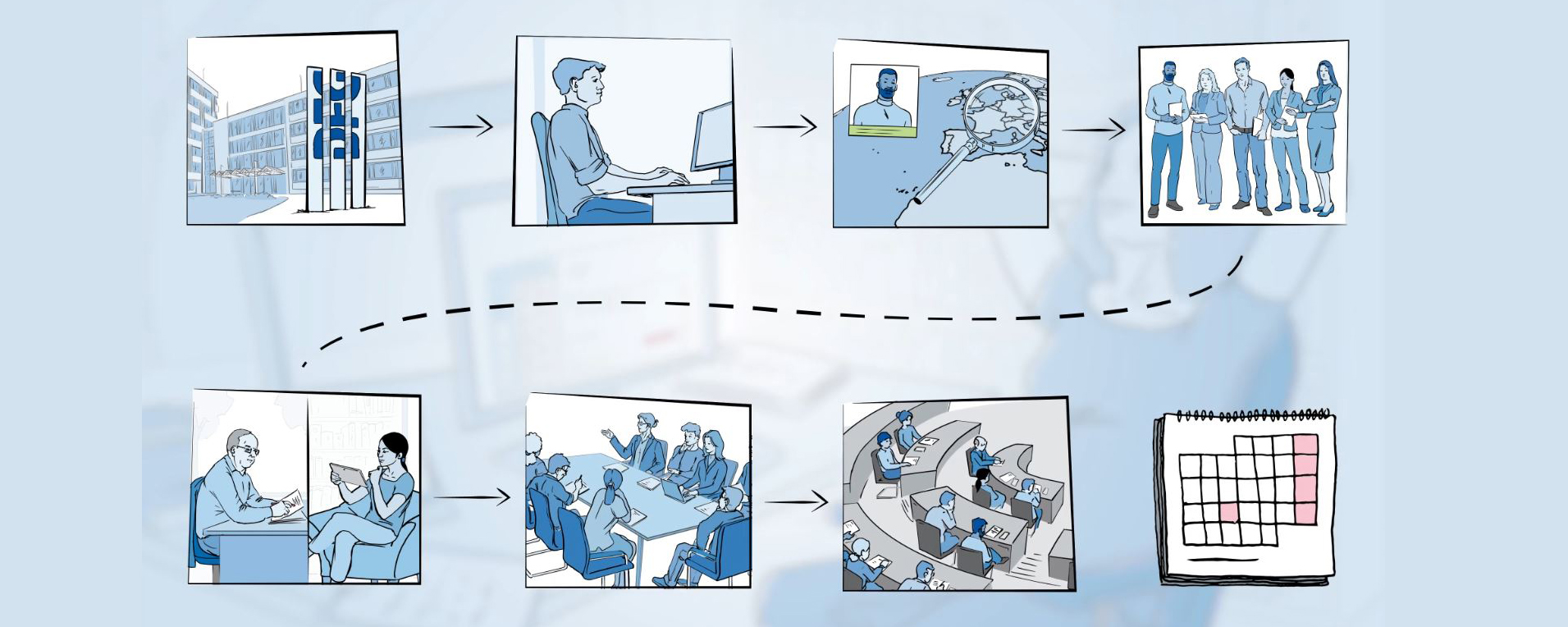Arriving at a decision
In order to be able to fund the best projects, the DFG has developed a differentiated system for arriving at decisions to approve or reject proposals.
The three-stage process – review, assessment, decision – is designed to ensure that decisions are based on a professionally sound and fair assessment of all relevant aspects of a funding proposal as compared to other proposals.
The main steps at a glance
The decision on whether to fund a research project is based on the principle of competition: the DFG only funds the most promising projects.
The average funding rate is about 30 percent. For specific details of funding rates, see Facts and Figure(interner Link). In the area of individual funding, the process from proposal submission through to the written approval/rejection takes about six months.
DFG funding proposals: the route to a final decision

DFG funding proposals: the route to a final decision
By clicking on "Play" you agree that data will be transmitted to Google. For further information on data processing by Google, please refer to Google's privacy polic(externer Link). Information on processing by DFG and your right to revoke your declaration of consent can be found in our Privacy Polic(interner Link).
1. Proposal submission and formal examination
Your proposal is submitted to the DFG Head Office via the electronic platform ela(externer Link). The first step here is a check to make sure all formal requirements have been met and the submission of the proposal has been correctly carried out. At this stage, a check is also carried out to see whether it was submitted in the correct subject are(interner Link) or if it might be better suited to comparative assessment in a different subject area. You will then receive written confirmation of receipt, with queries if necessary. The confirmation of receipt will also tell you which persons at the DFG Head Office are responsible for processing your proposal.
Did you know? When submitting your proposal, you select the appropriate primary subject area allocation yourself from the DFG subject area structur(interner Link). Often a project will touch on several subject areas, so you can optionally select (one or more) additional subject areas for the allocation. The process is flexible and involves multiple stages, ensuring that competition is as fair as possible for interdisciplinary proposal(interner Link), too.
2. Review
The DFG Head Office selects reviewers with the necessary subject-specific qualifications to assess your proposal. Special care is taken to rule out bias. Researchers from all over the world are asked to provide reviews. The reviewers’ vote provides the basis for the subsequent funding decision. Reviewers’ names remain confidential: this ensures their reviews are comprehensive and transparent. Any queries can be clarified via the Head Office.
3. Assessment
After the review stage, the reviews and the proposal itself are submitted to a review boar(interner Link). The members are scientists who are elected by the communities. The review board’s task is to undertake a comparative evaluation of all proposals presented within its subject area. The review board takes into account the reviewers’ comments and the relevance of their arguments. Proposals are prioritised based on the financial resources available and an approval or rejection recommendation is prepared for each proposal. This comparative evaluation and the need to keep within the budget may lead to the recommendations made by review boards differing from the votes made by the reviewers.
4. Decision
The recommendations put forward by the review boards are submitted to the Joint Committe(interner Link) of the DFG. Based on an interdisciplinary comparison, this body makes the final decision on approval or rejection.
5. Notification of the decision
Once the decision is made, you will receive written notification from the DFG Head Office. The letter of approval or rejection is also accompanied by all reviews (in anonymised form) as well as notes from the deliberations in the committees.
Did you know? You can view the processing status of your proposal online at any time via the Proposal Monitor in elan.